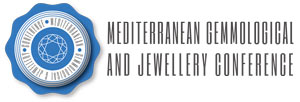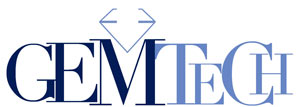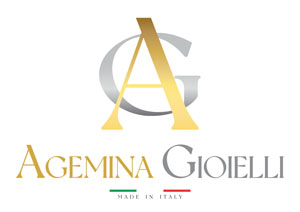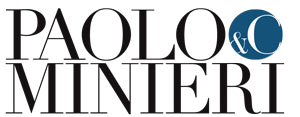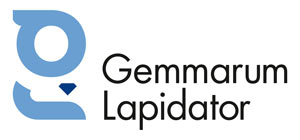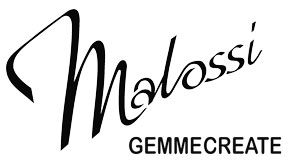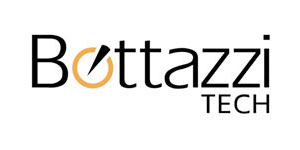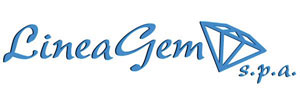Three days of intensive work, featuring 7 presentations alongside 47 multidisciplinary workshops. The JVA conference, held from September 8th to 13th, 2023, at Loughborough University, offered a dynamic format catering to the diverse needs of the market, a hallmark of the precious gem industry. In particular, the workshops fulfilled their role by delivering highly in-depth content, including previously unreleased materials even for industry insiders, all within an ideal networking environment for participants.

Julia Griffith, founder of the Gem Academy, provided an invaluable statistical overview of synthetic diamond trends. The precise and detailed examination of market data through the lens of production highs revealed a noticeable drop in prices. Punctual references to sales trends over specific timeframes allowed for a granular analysis of traded volumes. CVD material emerged as predominant in larger sizes, a significant shift from the landscape observed in 2015 when HPHT material dominated measurements above three carats. HPHT continues to prevail as the primary source for mêlée production, while sizes up to one carat exhibit a more balanced distribution between the two producing systems.

Additionally, data was disaggregated by color, purity, and cut quality, consistently distinguishing between HPHT and CVD. The price decline is evident even in recent, shorter time periods; for instance, in the last six months, “lab-grown diamonds” in the D, VS1 category saw a staggering 18.5% decrease for 1–1.03 carat stones equivalent to an astounding 97.85% drop according to the Rapaport index. Perhaps even more noteworthy is the significant price reduction for larger stones, such as a 28.42-carat square-cut VS1, which experienced a 58.5% decrease, plummeting to a total of $64,400 from June to early September 2023.
Stuart Robertson, the research director at Gemworld International, revisited the topic of colored stone market dynamics and consumer confidence. He elaborated on the softening demand in the gem and jewelry market, providing a comprehensive analysis of price trends. Robertson shed light on various aspects of the colored gemstone market, with a particular emphasis on the international price trends of the most sought-after gemstones. Buyers with a preference for higher-quality colored gemstones have seen a price increase much stronger than diamonds.
Gary Roskin, President and CEO of Roskin Gemological Services, provided a detailed description of several issues concerning diamond grading. The core of the presentation consisted of a series of “hints” to resolve doubts about borderline cases, such as Piqué 1 for both small and large stones and the issue of the relationship between the size of the inclusion and the size of the stone to be evaluated. In this perspective he revisited some insights based on Michael D. Cowing’s article1 on an objective system for diamond clarity grading, which aimed to address discrepancies between various laboratories.

This system assesses five key factors and has shown alignment with GIA and AGSL grades, suggesting the potential for improved grading consistency. He particularly emphasized important aspects about the grading of “chips”, antique cut stones, as well as Fancy Color Diamonds without masters, defining categories such as “Faint” (no observable tint, face up or face down), “Very Light” (start seeing color at the edges, whether just at the girdle edge or at the table edge), and “Light” (pale color overall). For the more intense color categories, such as “Fancy”, “Fancy Vivid”, “Fancy Deep”, and “Fancy Dark”, these should more conveniently refer to major gemological labs.
Rui Galopim de Carvalho, Vice President of CIBJO Coral Commission, conducted an overview of the scientific and regulatory elements to consider when evaluating precious coral, an organic gem, with a strong focus on sustainability issues. Precious coral is defined based on its taxonomy, making a preliminary distinction between precious corals of the Corallidae family (genus Corallium, Pleurocorallium, and Hemicorallium) and the stony corals of tropical reefs, which cannot be harvested and are protected.

The overview identified the most common species in jewelry, differentiating them from the commonly used commercial names associated with each species. These species include Rubrum (examples: Oxblood, “Sciacca” sedimentary 7000–7500 year old ), Elatius (Momo, Cerasuolo, Satsuma, with commercial names like Pelle d’Angelo, Bokè, and Magai), Secundum (Midway Rosato White/Pink), Hemicorallium Laauense (Deep Sea, Shin Kai, Misu), Hemicorallium Regale (Garnet), and Hemicorallium Sulcatum (Misu Missu Miss).
Species recognition is achieved through DNA fingerprinting, which is particularly crucial for enforcing CITES protocols, the international body regulating the trade of endangered species. Appendix 2 allows transactions with stringent regulations, while Appendix 3 pertains to species (such as Plurocorallium Konojoy, that is White Coral, and Corallium Secundum) that are not endangered but are included at the request of specific countries with existing internal regulations seeking cooperation to prevent unsustainable and illegal exploitation.
Roland & Nata Schluessel of Pillar and Stone International Inc. delivered an invaluable compilation of technical and market information on jade, focusing on grading related to color, texture, inclusions, and cut. They explored the geological formation of jade and how its symbolism in China adds value to it, particularly emphasizing the differing perceptions of jade and jadeite in China compared to Western countries. Hands-on sessions allowed participants to assess various samples and qualities, including imitations.

First and foremost, they made a crucial distinction between nephrite (tremolite/actinolite), known as the toughest material on Earth, being 220 times tougher than quartz monocrystal, and jadeite (a pyroxene rock). Chemically pure jadeite is NaAlSi2O6, colorless or white, with chromophores that replace Al with Ti2+, Mn3+, Fe2+, Fe3+, Cr3+, and Fe(OH)3, producing a wide range of colors. The red color of jadeite symbolizes good fortune, joy, and happiness, while traditionally, green is associated with generative growth and springtime. The most valuable jadeite variety, Lo/Hang Bo Li Zhong (translated in English: Old Mine Glassy Vivid Green), exhibits vivid pure green/green with a high degree of transparency and a very fine and compact granular texture.

Claire Carson of Elkington & Co. provided a historical account of Elkington & Co., a company that revolutionized the art of electro-metallurgy and introduced a style never before seen across the ages. They were global leaders and received numerous Royal Warrants in recognition of their achievements and designs. Claire took over from his father, Steve Carson, a founding member and Fellow of the JVA, and a first-class valuer. He had pursed his presentation on the history of Elkington & Co. before his untimely passing in February of this year. Claire was able to complete it and deliver his presentation on his behalf.
Adrian Hailwood, an independent watch specialist and one of the UK’s rare Specialist Watch Valuers, provided insights into recent turbulence in the watch market. Historically, depreciation from new was common due to a 20% VAT minimum and the loss incurred by not being the watch’s first owner. However, a significant change occurred with the 1988 launch of the Rolex Cosmograph Daytona, which introduced waiting lists to the industry. In April 1989, the Antiquorum “The Art of Patek Philippe” auction marked the industry’s shift towards recognizing wristwatches as serious collectibles alongside pocket watches.

In early 2022, there was a peak in watch valuations, driven by factors like reduced travel spending, pandemic-related business advantages, and accessible government loans during the COVID-19 era. Subsequently, there was a reevaluation leading to reduced collectible prices. The rise of cryptocurrencies and non-fungible tokens also impacted watches, transforming them into assets. Collecting watches as part of an investment portfolio gained prominence, resulting in the emergence of a specialized sector for tracking watch values.
In this evolving landscape, appraisal practices should prioritize due diligence, assess the watch’s prompt retail replacement availability, and adopt a longer-term perspective on value performance. The selection of comparables, especially for rare watches with limited sales history, should be approached cautiously. For valuations conducted in the last three years, clients must be informed about market changes and the potential reduction in insurance premiums associated with reappraisals.
The event concluded with a roundtable discussion titled “Diamonds, let’s discuss…” featuring experts Stuart Robertson, Gary Roskin, Charles Silverton, Julia Griffith, and Alberto Scarani. During this session, the speakers addressed questions previously posed by attendees. The majority of discussions revolved around synthetic diamonds, with particular emphasis on their potential impact in the near future, given the plummeting prices. Specifically, there was a common inquiry about whether these synthetics would become indistinguishable from natural diamonds in the future. The unanimous opinion of the experts was that this would not happen. Concerning their future proliferation, the consensus among most was that the seemingly uncontrollable price decline would soon lead to a loss of appeal among consumers, subsequently benefiting the natural diamond market. Many expressed doubt that in the very near future, synthetic diamonds would hold enough value to justify the cost of their reports.
During the gala dinner on September 9th, Alan Wetherall was honored with the JVA Lifetime Achievement Award 2023 and Gareth Brown received recognition as the Valuer of the Year.

Contrasting Appraisal Landscapes: Italy vs. USA and UK
In Italy, the demand for appraisals of precious objects is primarily driven by inheritance issues and legal implications. Access to the profession is regulated through minor local Associations and the creation of the “Ruolo dei Periti e degli Esperti” (Authorized Directory of Appraisers and Experts) held at the Chambers of Commerce along with membership in the “Albo dei consulenti tecnici d’ufficio (C.T.U)”, Registry of Technical Consultants, held at the local Courts.
In contrast, in the USA and the UK, the appraisal and valuation services related to precious items are highly developed, mainly due to the vast insurance market for such items. Appraisers in these countries often join various reputable and qualified Associations, making it challenging to operate independently, as these Associations serve as safeguards for the confidentiality and accuracy of appraisal services.
One of the most significant organizations across the United States is the ASA (American Society of Appraisers, 5500 members in 2017), a non-profit organization representing diverse appraisal disciplines. The NAJA (National Association of Jewelry Appraisers, 756 members, for-profit) stands out as the only appraisal association solely dedicated to fine gems, jewelry, and timepieces. Additionally, the ISA (International Society of Appraisers, 930 members) is a leading global association of personal property appraisers.
In the United Kingdom and Ireland, the most prominent organization is the JVA (Jewellery Valuers Association), the sole independent organization for professional jewelry, gemstone, watch, and silver valuers in the country. Of course, there are numerous other associations worldwide with similar roles and objectives, but the most qualified among them are the ones offering gemological education, with a specific focus on grading and value determination.
Interestingly, for those immersed in the world of gemology, these associations offer valuable and multi sided education, ongoing updates, and networking opportunities. A prime example of this is the recent JVA conference held in Loughborough.
Notes
1 https://www.readkong.com/page/objective-diamond-clarity-grading-michael-d-cowing-2223018
Article by Alberto Scarani, published on IGR – Italian Gemological Review #17 – Autumn 2023





